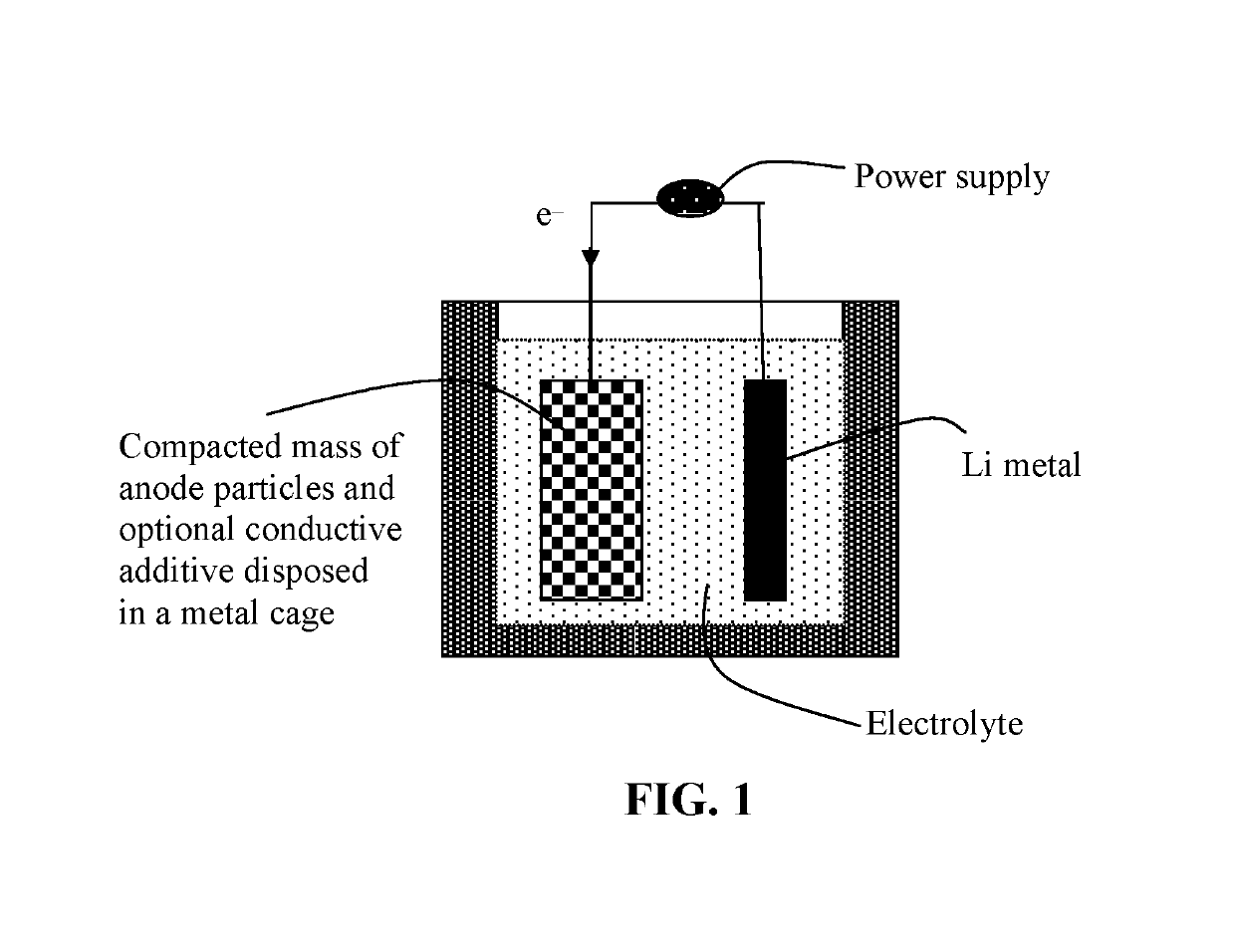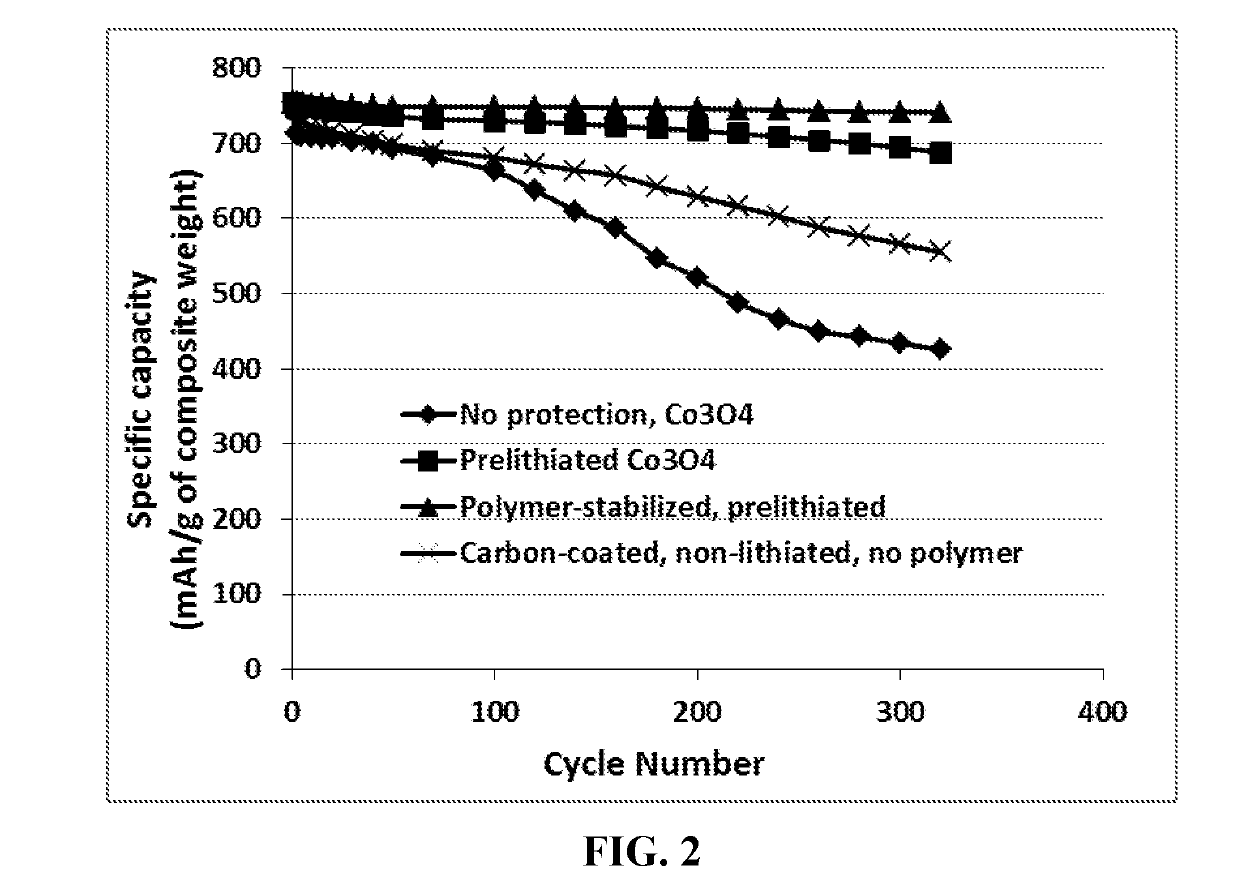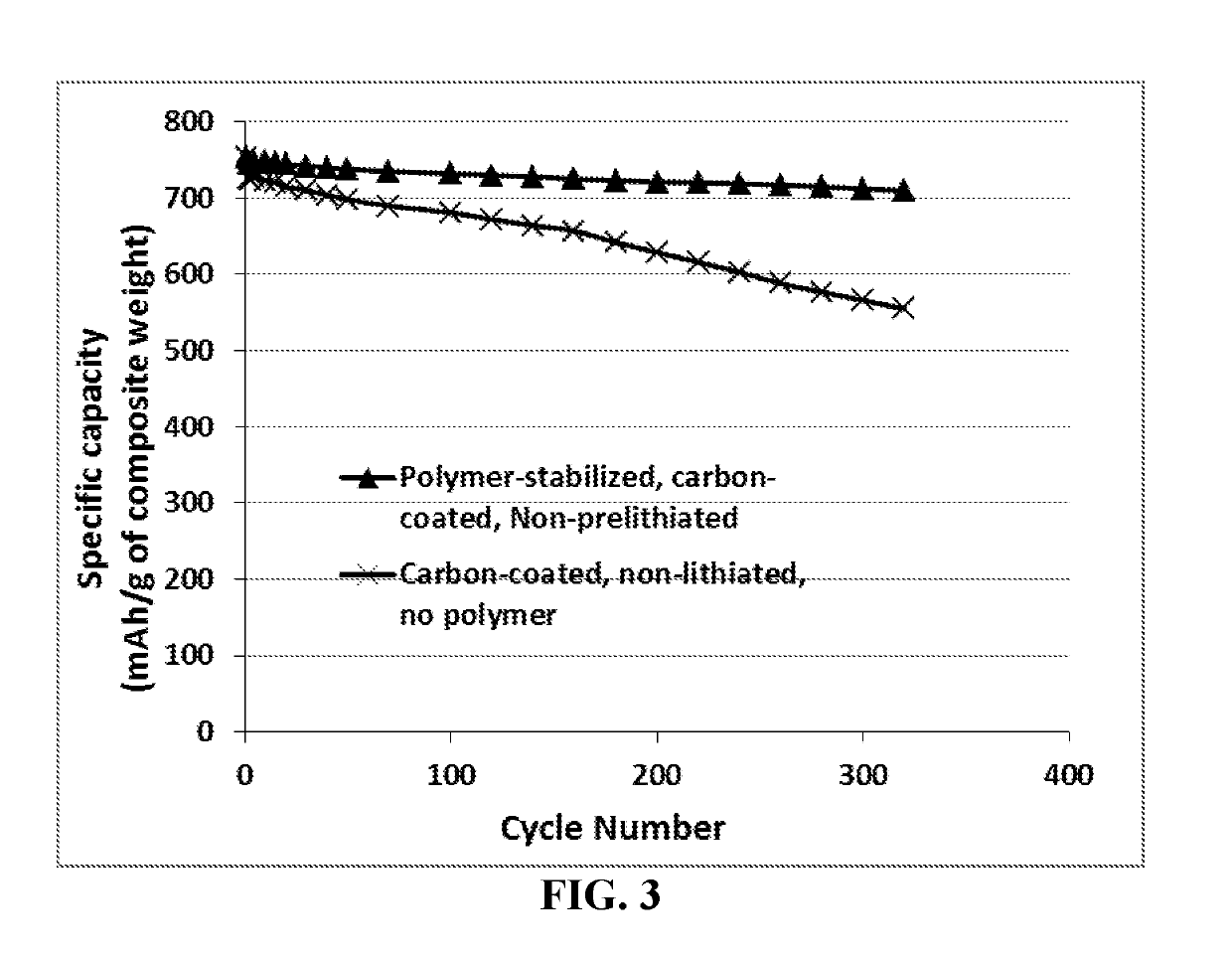Surface-Stabilized Anode Active Material Particulates for Lithium Batteries and Production Method
a lithium battery and active material technology, applied in the manufacture of final products, cell components, electrochemical generators, etc., can solve the problems of loss of particle-to-particle contact between active materials, affecting the life of charge-discharge cycles, and affecting the specific capacity of active materials. , to achieve the effect of prolonging the charge-discharge cycle and improving the specific capacity
- Summary
- Abstract
- Description
- Claims
- Application Information
AI Technical Summary
Benefits of technology
Problems solved by technology
Method used
Image
Examples
example 1
Cobalt Oxide (Co3O4) Anode Particles
[0111]An appropriate amount of inorganic salts Co(NO3)2.6H2O and ammonia solution (NH3.H2O, 25 wt. %) were mixed together. The resulting suspension was stirred for 2 hours under an argon flow to ensure a complete reaction. The obtained Co(OH)2 precursor suspension was calcined at 450° C. in air for 2 h to form particles of the layered Co3O4. Portion of the Co3O4 particles was then encapsulated with a phenolic resin, which was then carbonized at 500° C. for 2 hours and 900° C. for another 2 hours.
[0112]A sample of Co3O4 particles and a sample of carbon-coated Co3O4 particles were then electrochemically lithiated to produce prelithiated particles. Some of the prelithiated particles and, separately, some of the non-lithiated particles were then surface-protected by a layer of PEO using a pan-coating method.
[0113]For electrochemical testing, the working electrodes were prepared by mixing 85 wt. % active material (encapsulated or non-encapsulated parti...
example 2
Polymer-Stabilized Prelithiated Tin Oxide Particles
[0119]Tin oxide (SnO2) nanoparticles were obtained by the controlled hydrolysis of SnCl4.5H2O with NaOH using the following procedure: SnCl4.5H2O (0.95 g, 2.7 m-mol) and NaOH (0.212 g, 5.3 m-mol) were dissolved in 50 mL of distilled water each. The NaOH solution was added drop-wise under vigorous stirring to the tin chloride solution at a rate of 1 mL / min. This solution was homogenized by sonication for 5 m in. Subsequently, the resulting hydrosol was reacted with H2SO4. To this mixed solution, few drops of 0.1 M of H2SO4 were added to flocculate the product. The precipitated solid was collected by centrifugation, washed with water and ethanol, and dried in vacuum. The dried product was heat-treated at 400° C. for 2 h under Ar atmosphere.
[0120]Samples of various different tin oxide particles were subjected to electrochemical prelithiation using lithium hexafluorophosphate (LiPF6) as the salt dissolved in EC-PC (50 / 50) as an electrol...
example 3
Polymer-Stabilized Prelithiated Tin (Sn) Nanoparticles
[0122]Nanoparticles (76 nm in diameter) of Sn were encapsulated with a thin layer of phenolic resin shell via the spray-drying method, followed by a heat treatment from 350-600° C. for 4 hours to obtain carbon-coated Sn nanoparticles. Half of these C-coated Sn particles were subjected to encapsulation by polyethylene glycol methyl ether (PEG-me) by dispersing the carbon-coated and, separately, the un-coated Sn nanoparticles in a PEG-me / ethanol solution, followed by spray-drying. Unprotected Sn nanoparticles from the same batch were also investigated to determine and compare the cycling behaviors of the lithium-ion batteries containing these particles as the anode active material.
[0123]Shown in FIG.6 are the specific capacities of 3 lithium batteries: one having an anode active material featuring polymer-stabilized carbon-encapsulated Sn particles, one having carbon-encapsulated Sn particles (but no protecting polymer layer), and ...
PUM
| Property | Measurement | Unit |
|---|---|---|
| lithium ion conductivity | aaaaa | aaaaa |
| thickness | aaaaa | aaaaa |
| diameter | aaaaa | aaaaa |
Abstract
Description
Claims
Application Information
 Login to View More
Login to View More - R&D
- Intellectual Property
- Life Sciences
- Materials
- Tech Scout
- Unparalleled Data Quality
- Higher Quality Content
- 60% Fewer Hallucinations
Browse by: Latest US Patents, China's latest patents, Technical Efficacy Thesaurus, Application Domain, Technology Topic, Popular Technical Reports.
© 2025 PatSnap. All rights reserved.Legal|Privacy policy|Modern Slavery Act Transparency Statement|Sitemap|About US| Contact US: help@patsnap.com



